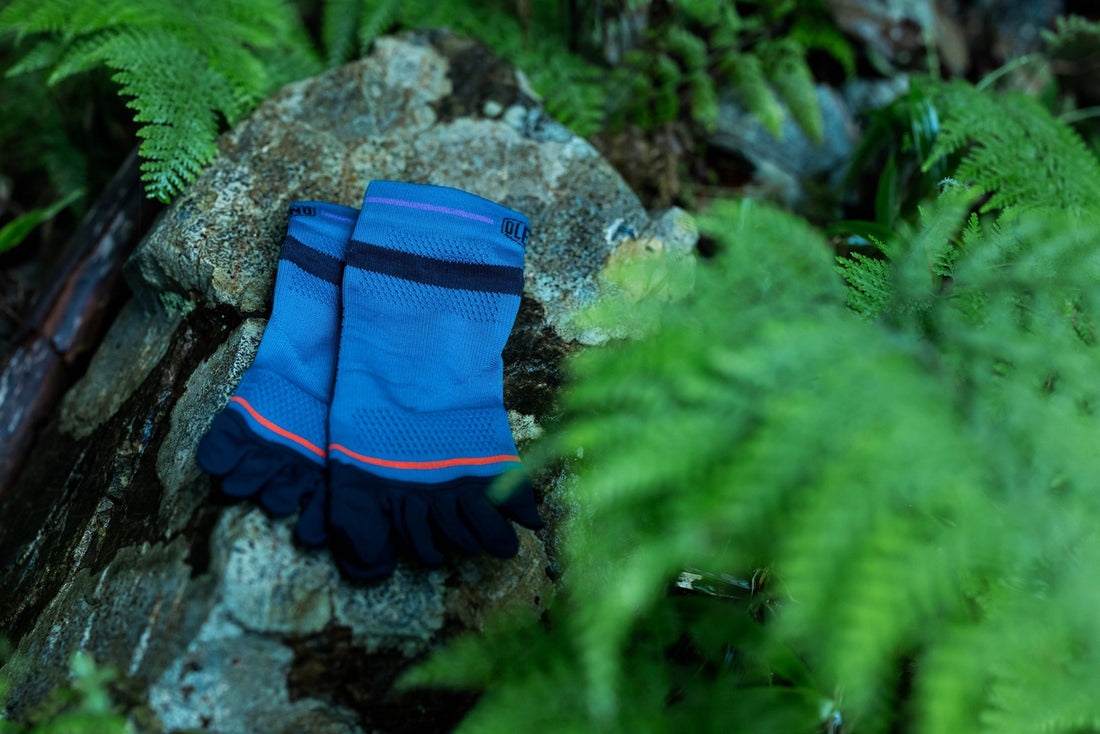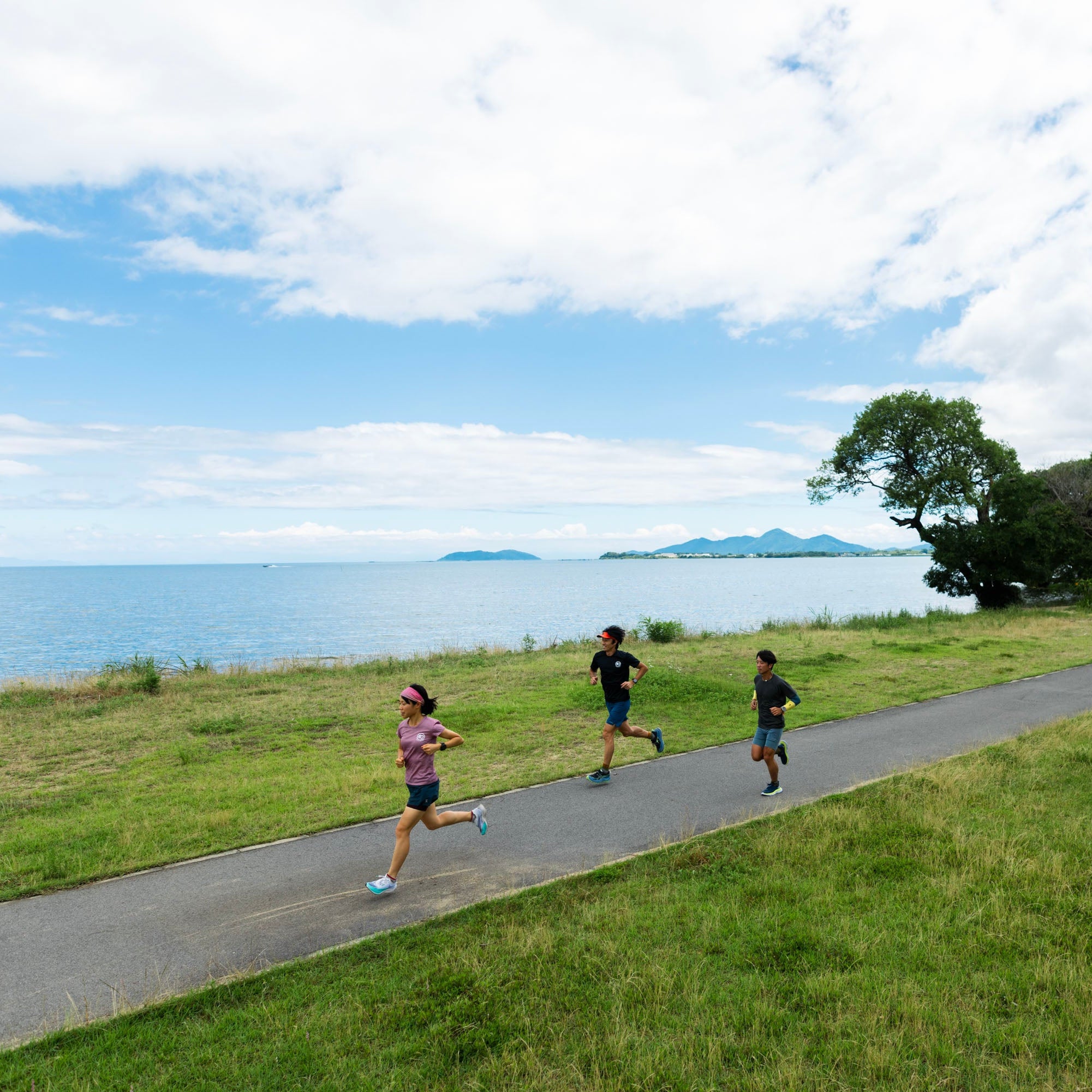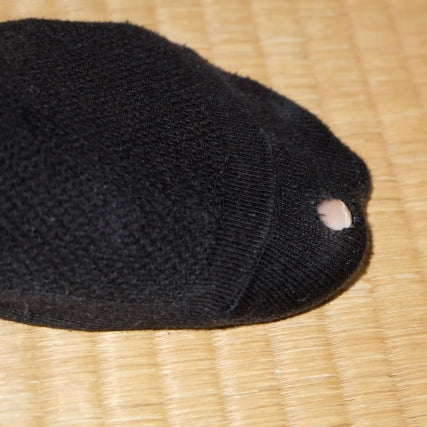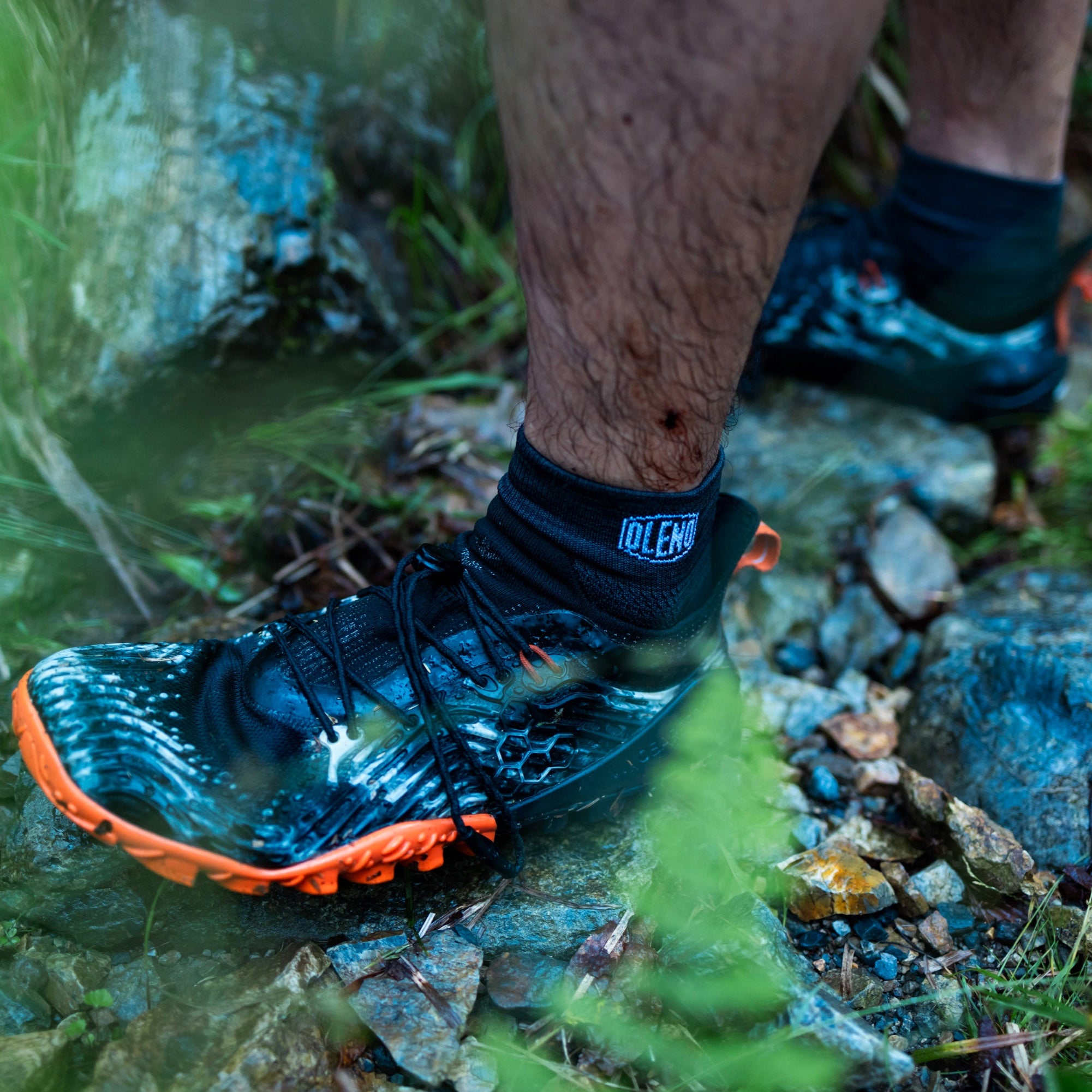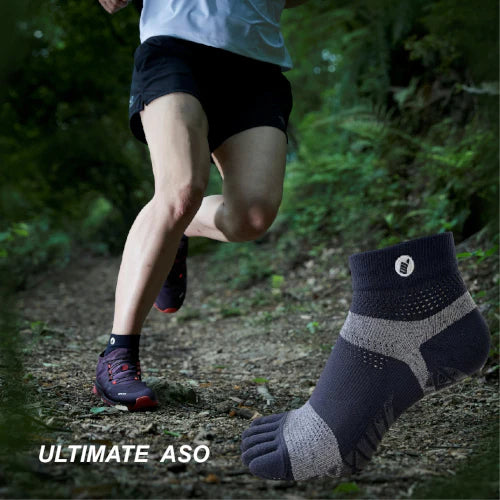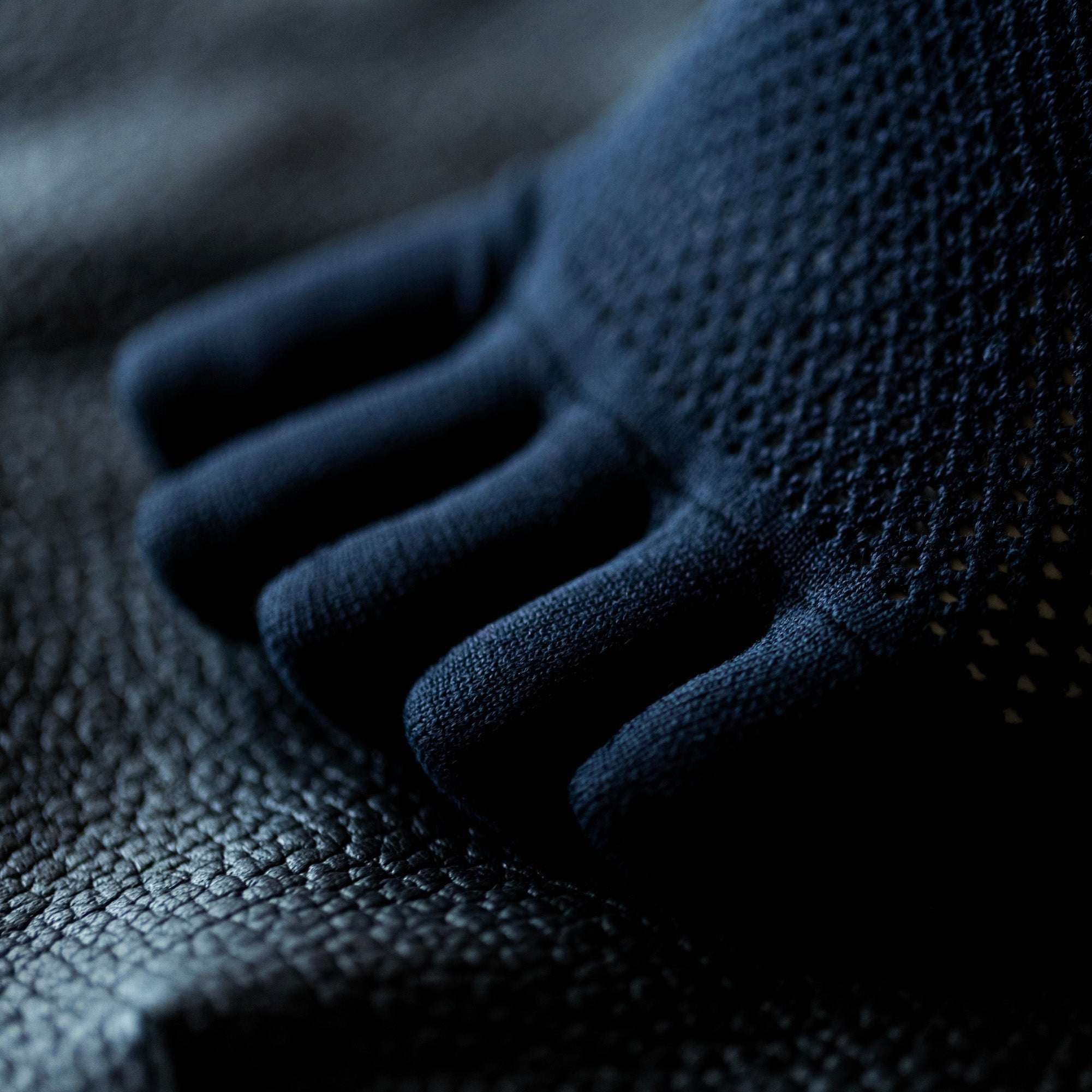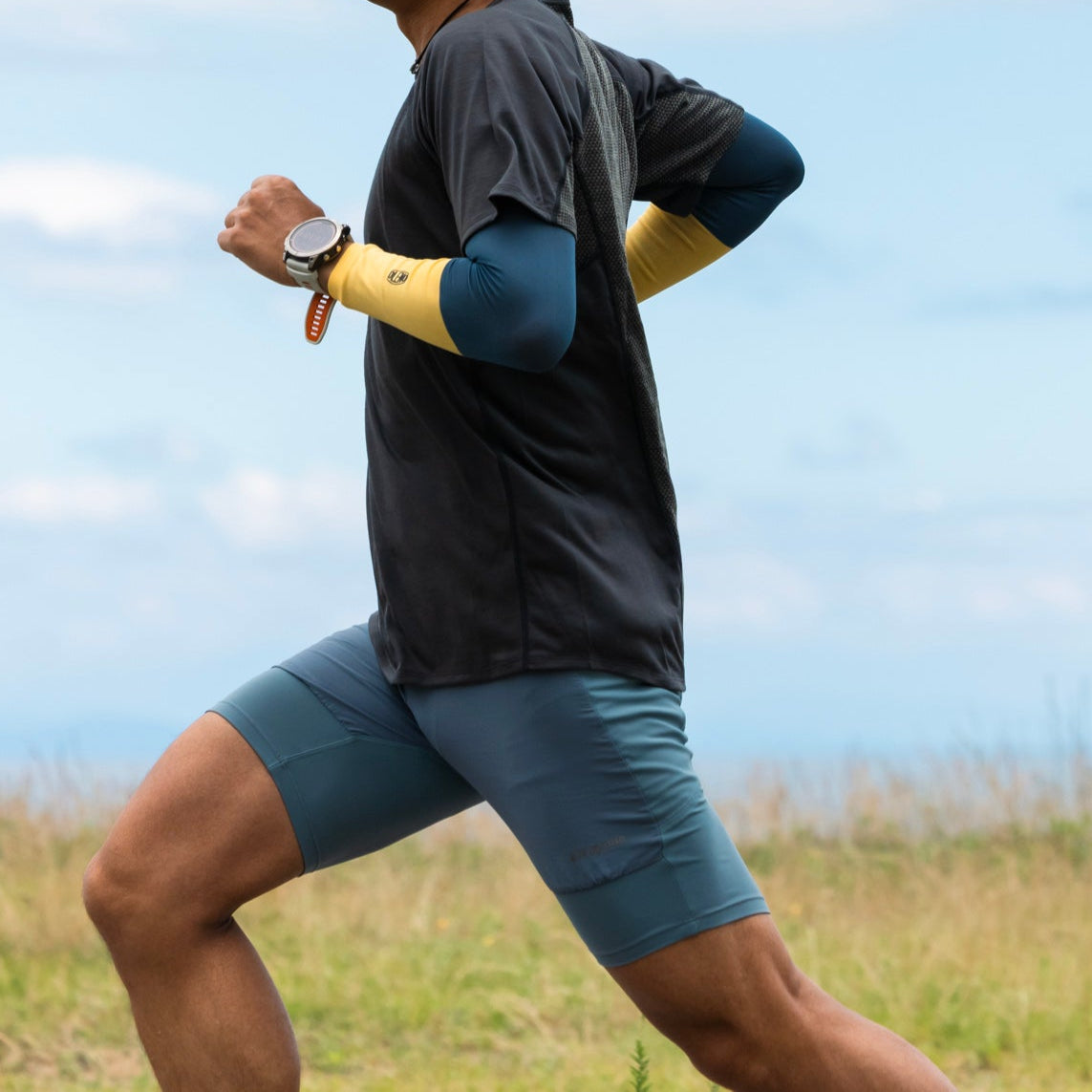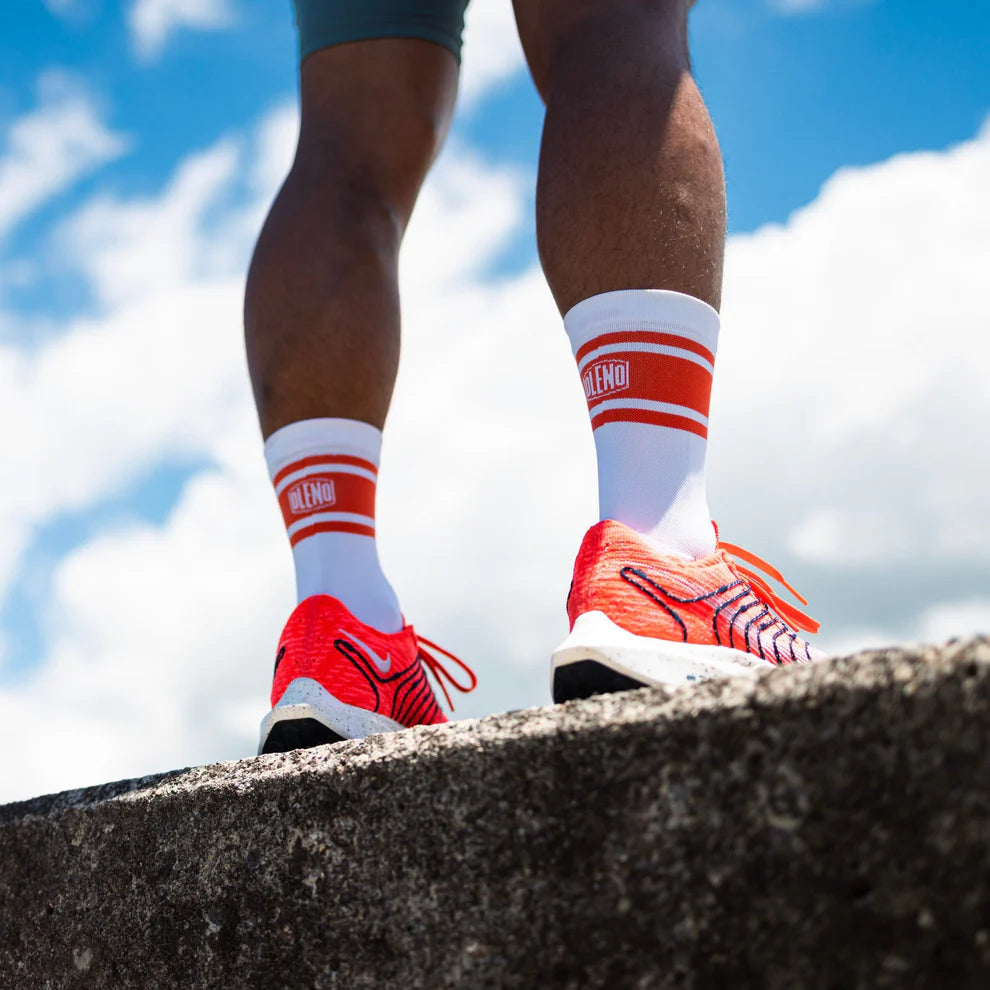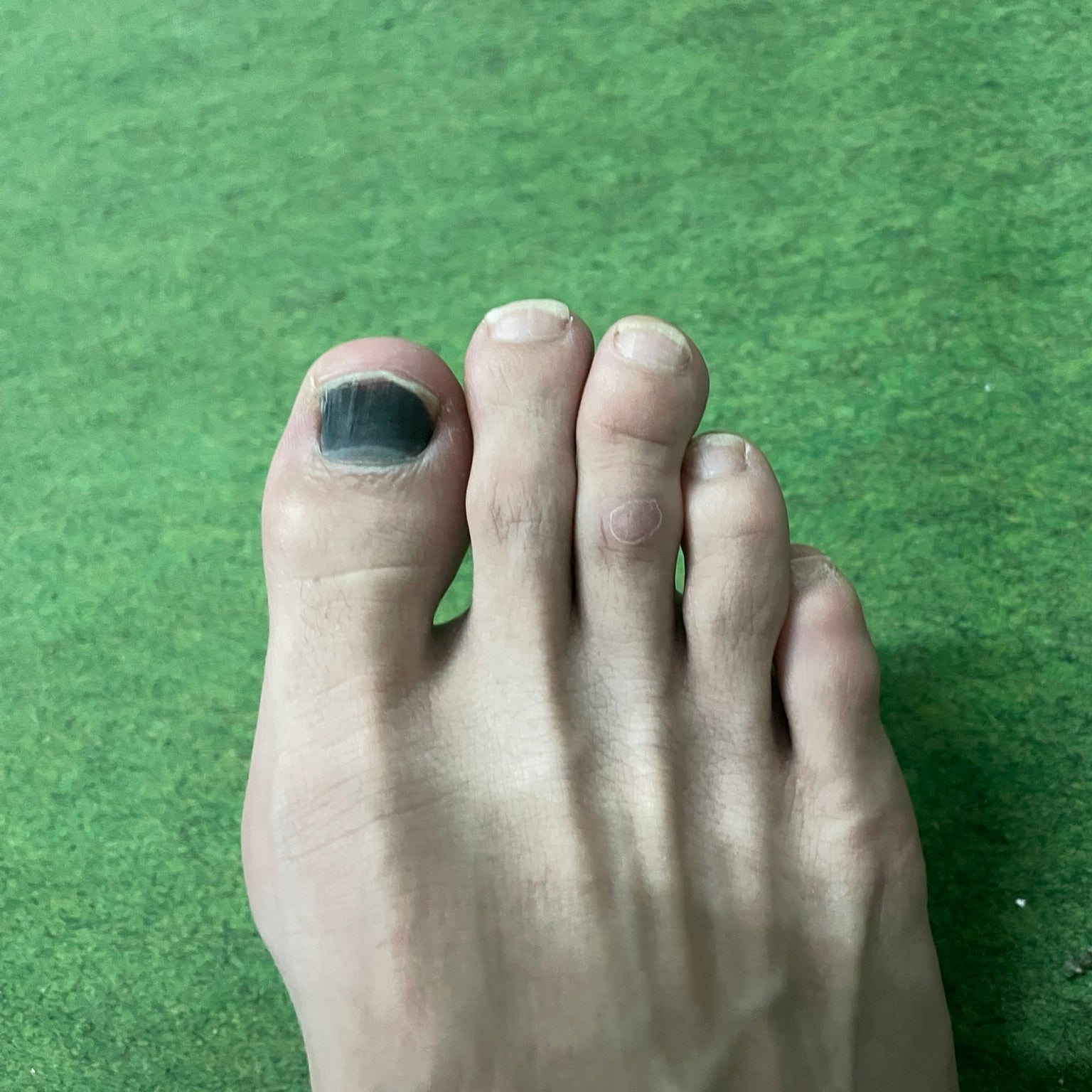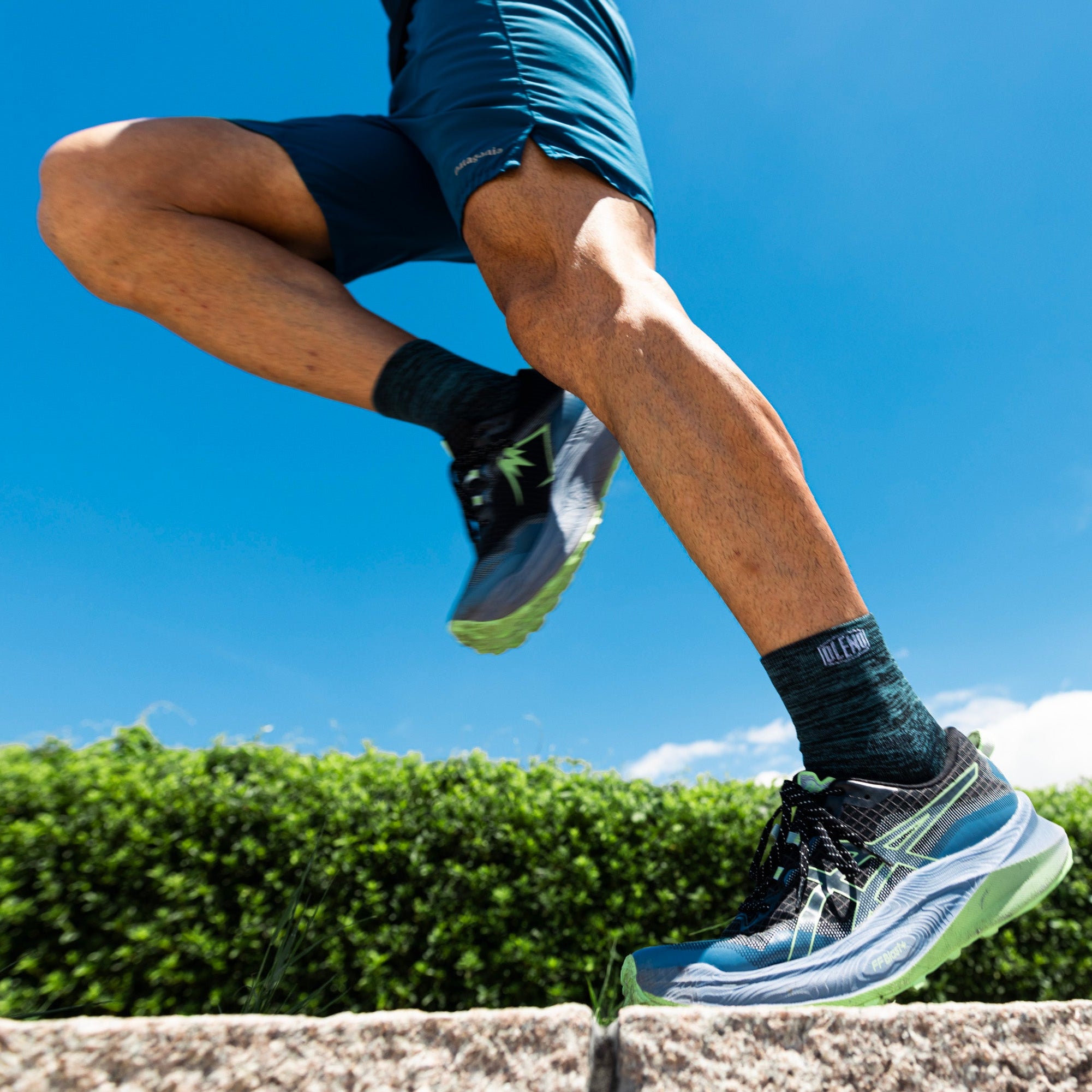Hello, I'm Hiroki, a staff member at OLENO.
Just the other day, I participated in a 23-kilometer trail running race. After the race, I went to a hot spring and noticed that my toes were completely black . It's been about a month since the race, and my toes are still black, so I've been racking my brains trying to figure out what to do about it.

While I hope that it will be cured by summer, I have thoroughly researched the causes and measures to prevent black nails from occurring again , so if you are a marathon runner and are suffering from the same problem, please refer to this article.
[As of July 12, 2025]
The nail came off in chunks and grew back perfectly!

Impact to the nail is the cause of black nails (runner's toe)
The official name for black nails is subungual hematoma , and the cause is, as I had imagined, internal bleeding caused by repeated pressure and friction on the nail. I didn't get black nails when I ran around 10 kilometers, so it seems to be more common when running long distances. (Apparently, black nails are more common at full marathon level.)
Digging deeper into the causes,
There are four main causes, so we will look at each in detail along with countermeasures .
1. Mismatched shoe size and fit
②The influence of running style and form
3) Lack of nail condition and care
④The effect of socks
1. Mismatched shoe size and fit

- Running shoe size and fit issues
If you wear shoes that are too small , your toes will be compressed and your nails will always be touching the shoe . Conversely, if you wear shoes that are too large , your feet will slide forward inside the shoe , and your toes will hit the front of the shoe every time you run.
-Shoelaces are too loose
This is an easy cause: your foot tends to slide forward in your shoe, causing your toes to hit the front of the shoe.
→ It's best to use a " heel lock " or " shoelaces for runners " to reduce back and forth movement within the shoe.
②The influence of running style and form

・How to run by landing on your toes
Runners who run with a forefoot sprint (landing on the toes) tend to put weight on the base of their big toe . This is especially true when they are running fast, as the pressure on the toes can make the nails more susceptible to internal bleeding. (Indeed, when I was an athlete, I competed in the 400m, and my nails would often turn black after races.)
→When going downhill, shorten your stride and try to keep your feet as close to horizontal as possible to the ground .
3) Lack of nail condition and care

・Nails are too long
If your nails are long, they are more likely to hit the inside of your shoes while running, and each time they hit the shoes, the nail bed (the skin under the nail) is compressed, causing internal bleeding. Surprisingly, wearing thick socks makes your nails even more likely to be compressed.
Improper nail cutting
I had no idea about this, but apparently if you cut your nails into a rounded shape , the edge of the nail is more likely to hit your shoes and be damaged. On the other hand, if you cut your nails too short , the support for the nail weakens and the base of the nail is more likely to be damaged, so that's not good.
→ It is recommended to cut your nails square so that they are of a suitable length and can be firmly supported.
④The effect of socks

- Thickness of socks
If socks are too thick , the space inside the shoe will be narrower, putting more pressure on the toes . This causes the toes to constantly press against the inside of the shoe, making the nails more likely to turn black. Thick socks can be counterproductive, especially if you're wearing tight running shoes.
- Grip strength of socks
Slippery socks or socks without grip (like most running socks made of silk or synthetic fibers) can make it easier for your feet to slide back and forth inside your shoes , which naturally means your toes will hit the front of your shoes more often, especially when going downhill.
→ Wear running socks that are the right thickness (not too thick, not too thin), that are compatible with your shoes, and that have strong anti-slip properties to prevent your feet from slipping inside your shoes even when going downhill.
The above summarizes the causes and solutions.
1. Mismatched running shoe size and fit
②The influence of running style and form
3) Lack of nail condition and care
④The effect of socks
You may be able to prevent black nails (runner's toe) by simply improving one of the above points ① to ④, but you may not be able to prevent it unless you improve all of ① to ④.
If you think you may be experiencing " ④ The effect of socks," we recommend OLENO socks .

OLENO continues to develop socks specifically for running, and the ULTIMATE series for trail running in particular has now become an essential piece of equipment for a variety of athletes who suffer from foot problems .
The socks themselves are thin, but they use a super-grip silicone rubber with proprietary technology to prevent them from slipping inside the shoes. Incidentally, I wore socks from another company during this race as part of my market research.
 *An experiment to see how non-slip it is. Click to watch the video.
*An experiment to see how non-slip it is. Click to watch the video.
The last time my nails got black, it was likely because I was wearing socks that didn't have anti-slip properties, so I actually tested whether this grip really could prevent black nails .
Last time I participated in a 24km trail race, my toenails turned black, so this time I participated in a trail race of the same distance.
The pants worn during the event were the ULTIMATE ASO crew length .

I didn't want my nails to turn black, so I chose the model with the best grip in OLENO's ULTIMATE series.
The cumulative elevation gain was lower than in the previous competition, so it may not have been an adequate test, but we were actually able to hold off the black claws!

(The reason the base is black is because the previous black nail has not yet healed.)
I have only tested it on a 24kg scale so far, but I think it's worth a try for anyone who is troubled by black nails.
In addition to the runner's toe, we also offer types that are designed to effectively prevent foot problems that occur during trail running and running, such as sweaty feet , peeling skin on the soles of the feet , and blisters .
I don't think there are many manufacturers that specialize in socks to this extent, so I recommend you give them a try. (It's also rare to find a product that's entirely made in Japan.)
[Trail Running Trend News]
- Developed with world-class trail runners. The ultimate model of trail running socks, "Ultimate TNG"
・7 recommended trail running races for beginners in Kansai
・The most popular item in 2024! Ultimate ASO: Trail running socks that integrate your shoes and feet

